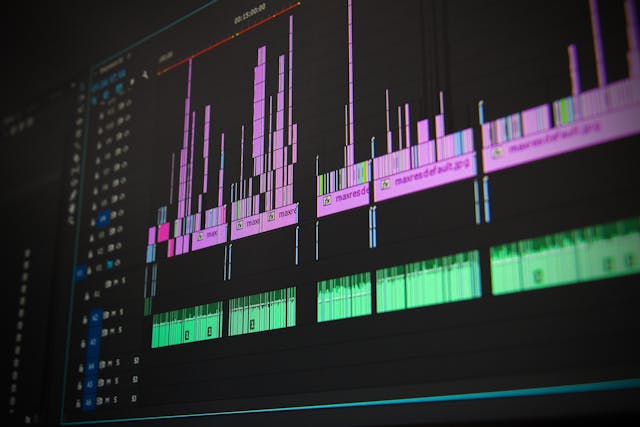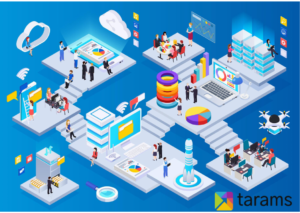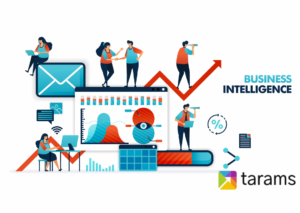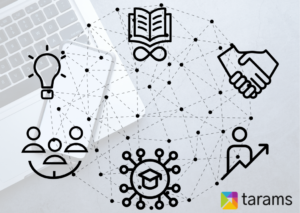Video as a form of content has always displayed great caliber to scale and support education programmes. Conventional video technology caters to a wide array of learning needs but limited to point solutions only. It gives us the ability to record, edit, manage and share videos that too comes at a hefty cost.
However, with the inception of BI, it became smooth sailing to derive learning analytics and track performance of a video content utilized for the purpose of training and education. Benefits of learning analytics cater to education industry in creating customized videos and recording KPIs such as Subscribe, Like, Views, Share, etc. and enables to view the content using an integrated suite of tools.
Video optimization and inbuilt learning analytics have been helping several enterprises to plan strong foray for video-based learning and to get the most out of their existing videos.
Let us have a quick sneak peek at top trends & capabilities you would like to have on your video platform to amplify your L&D ROI.
Finding relevant content segment with in your video
Low-Code vs. No-Code: The Tech Behind It
A Low-Code platform is a boon for developers seeking efficiency in the app development lifecycle. With its visual interface and automated processes, it minimizes the grunt work of manual coding, letting developers focus on the higher-level aspects.
On the flip side, a No-Code platform is a game-changer for those without coding skills. Its drag-and-drop simplicity and ready-made templates empower users to craft their apps without wrestling with code complexities.

tarams elearning
That means the video platform must allow indexing the words spoken in the video or displaying on-screen on the video along with the traditional Meta description.
Hence, the capacity to index and optimize tags with every minute segment of the video timeline will be the game changer. That means, when a learner wants to view a specific topic or portion in a specific lesson under a large video module, the system will be capable to make the user to land on to that desired segment.
Viewing Analytics: Learning Analytics to track video performance at granular level
Now that the learning videos are segmented, ingested with relevant Meta data and optimized for specific search results, it’s time for the viewing analytics to run the show.
Viewing analytics gathers and analyses viewing patterns from each indexed and optimized segment of a video and converts them into actionable insights that help the L&D organizations to forecast future learning needs and optimize current content.

tarams elearning
The success of any training video can be recorded by monitoring when, how and how viewers interact with your video content. A video platform with advance viewing analytics helps the administrators to track the granular level performance of video in real-time and help them to create videos that actually resonates to goals and challenges of their learners.
When a user logs in to view a video, the viewing analytics gives you insights into what video they watched, what were the most viewed video segments, and how many have completely watched your video. It helps you to decrease churn and abandon rates and revise training content to ensure on-going success.
Integration of Experience API with viewing Analytics
The blend of Experience API (xAPI in education) and analytics prove to be the actual crux of success for any L&D organization. xAPI lms in education industry has been developed to capture and transmit metadata about events related to the segments. Companies are now using xAPI data to get information about any type of user interaction like time spent on the content, the time taken to complete the course, what content the learner started but did not complete, what piece of content they interacted the most. Such data integrate with viewing analytics to give you easy to read reports that give you a clear picture of the performance of the learning solution and its impact on the learner.
The xAPI model in education industry will empower the administrator or the trainer to drill down to identify successful learning behaviours of high performing learners and group similar patterns. These set of patterns may include multiple behaviours and activities that are more likely to result in overall learning success when practiced in a specific sequence and combination. And the same can be replicated and prescribed to underperforming learners and can be used to develop personalized learning models as well.
Thus, you see how learning analytics has evolved to reshape your L&D roadmaps. It has opened a new world of insights and data-driven decision-making capabilities. And the possibilities what you can track, optimize and measure is actually limitless.
At Tarams, we develop powerful learning analytic solutions that capture granular viewing stats and data to understand learning patterns and behaviour that cater to personalized learning models and convert into easy to read reports and dashboards. If you want to know how our analytics solution has helped fortune 500 clients, mid-sized firms & start-ups from L&D space then please connect with our digital learning solution specialist.




